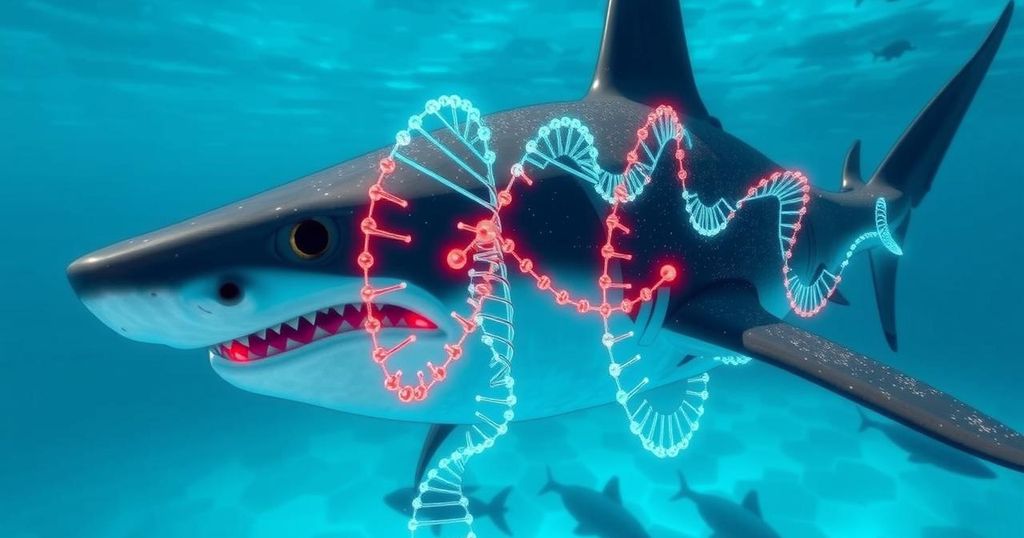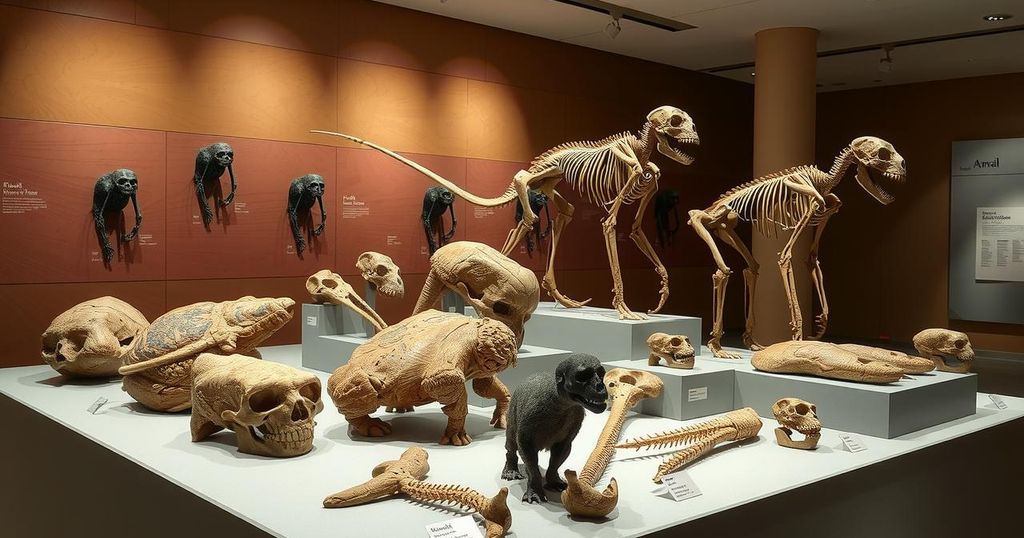Unlocking Longevity: The Secrets of the Greenland Shark’s Genome
The Greenland shark, known to live for centuries, has had its genome mapped, revealing mechanisms contributing to its exceptional longevity. Scientists are exploring the striking features of its genome, including jumping genes that help repair DNA, signals of evolutionary survival strategies. Research indicates insights from these sharks may hold keys not only to understanding aging in animals but also potential applications in extending human life.
Deep in the frigid waters of the North Atlantic and Arctic oceans, the Greenland shark swims silently, a creature of mystery and survival. Known to live over 400 years, these elusive fish are not just ancient; their genomic threads could unravel the secrets of longevity itself. Recent research has mapped approximately 92% of their genome, revealing why they endure where many species falter. With a metabolism that drifts slower than the currents, these magnificent beings grow less than an inch a year, only to stretch over 20 feet when fully grown, and they don’t reach sexual maturity until they are over a century old.
Researchers found that the Greenland shark’s genome is extraordinarily vast—twice that of humans—offering clues to their remarkable lifespan. Interestingly, the shark’s DNA contains a high percentage of jumping genes, known for their ability to self-replicate and sometimes cause mutations. Yet, in the Greenland shark, these genetic elements seem to assist in DNA repair, reversing potential harm and ensuring robust health.
Dr. Steve Hoffman, a prominent researcher on the project, noted, “Only with the genome assembly can we really understand which, for instance, mutations have accumulated in the shark that led to this enormous lifespan.” Such insights not only illuminate shark biology but also beckon possibilities for understanding human aging. By dissecting the genetic codes of such long-living creatures, scientists may reveal ways to enhance human lifespans too, a tantalizing thought that dances on the edges of science and hope.
This study appears amidst a backdrop of scant historical data, previously limited to commercial fishing records and anecdotal evidence. Pioneering technology, like underwater cameras, has now allowed researchers to observe these creatures more closely. The Greenland shark’s precarious status as a vulnerable species means that this research could also aid in conservation efforts, drawing attention to the broader implications of aging and survival in our ever-changing world.
A fascinating revelation lies in the potential adaptability of DNA repair mechanisms between species. Dr. Vera Gorbunova emphasized the need to explore diverse biological paths to enhancing our own life spans: “If we really want to increase the human lifespan significantly… it’s good to look at the tricks of very long-lived animals.” The mysteries of the Greenland shark’s longevity are not just of academic interest but may serve as essential keys to unlocking longer, healthier lives for humans.
The Greenland shark is a remarkable species known for its extraordinary lifespan, possibly the longest of any vertebrate. These sharks thrive in the cold depths of the North Atlantic and Arctic oceans, demonstrating unique adaptations to their frigid environments. Understanding their lifespan and underlying genetic mechanisms can profoundly impact our knowledge of aging processes not only in sharks but potentially in humans as well. Recent genomic studies are revealing insights into their longevity and the biological strategies that might be applied to enhancing life expectancy in other species.
The genetic mapping of the Greenland shark highlights an intersection of longevity research and conservation biology. By deciphering their genome, scientists hope to unravel the biological mysteries that allow these animals to thrive well beyond a human century. Such findings could eventually lead to breakthroughs in extending human lifespans and improving health outcomes. The relationship between species longevity and genetic adaptation emphasizes the importance of evolutionary biology in understanding life itself.
Original Source: www.cnn.com




Post Comment